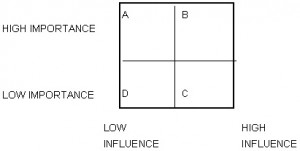This week has started with questions and more so than any other week of the year. And no this is not a PMS post or a pre-post-PMS post. Most people don’t know/care but the first biggest conclave of women’s rights has started in new york city this week. It brings together every year 100’s (in the past even 1000’s) of women (and some men – mostly as part of country delegations) to the big apple to talk about “A” subject matter that is of import to women’s well being in the world. It lasts 2 weeks and is a very busy hectic time for all those involved and here, its a networking event for women’s rights organizations, international NGOs and donors, government representatives and those select few who are representing the voice of the voiceless women in their countries who go about their daily lives with no knowledge of this meeting.
I have looked at this meeting with awe and despair. I go back and forth with everyone who cares to talk to me about why… why not. I can not find an answer in their reasons that satisfactorily answers why. I can not satisfactorily respond to their question on why not.
What I do know is that the status of women does not change significantly enough every year. What I do know is since everyone who comes to this is already working in changing the lives of women for the better it does no one any service if they continue to just talk to each other. What I do know is changes do not occur over a meeting in a closed room where a privileged few talk to a privileged few about how to help the unprivileged. What I do know is that this is not a celebration of women. What I do know is that there is no tooth when it comes to implementation of what we discuss and even if rarely agree on some recommendations. What I do know is that advocacy is an important strategy but advocating to the converted is a waste of resources. What I do know is that advocacy laced with political correctness is worse than no advocacy. What I do know is that this leaves us feeling that we did something meaningful when in reality we didn’t. What I do know is when we look around us we find others who are skeptics too but none of us have the courage to act to change the skepticism – and we are speaking of empowering women of the world here?
I do not think boycotting is the answer here. We need to engage and engage with reasonable periodicity that will allow us to meaningfully reflect and analyze. We need to engage to hold others to account, to ourselves to account. We need to allow people to say honestly the status of women today not to talk about fake realities that they have created for the sake of the meeting. We need to remember we are the privileged and when we speak on behalf of others (especially since they did not ask us to represent them) we bear a great deal of responsibility and accountability.
